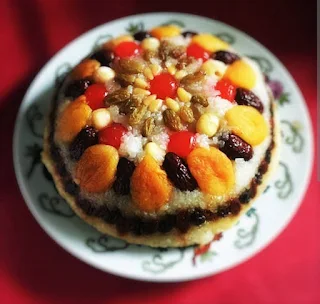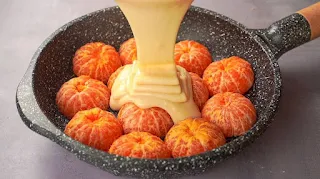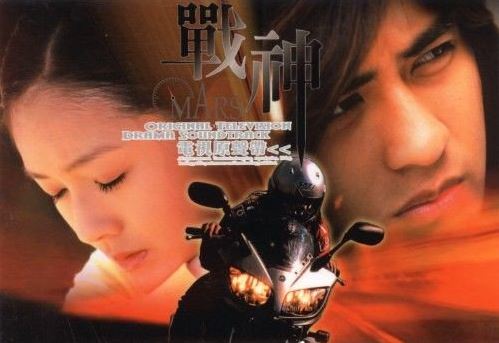On January 22, 2023, Chinese communities around the world will officially welcome the Year of the Rabbit! Xīnnián kuàilè, gōng xǐ fā cái!🏮🏮
In Asia, the Chinese New Year or Spring Festival is observed in Hong Kong, Taiwan, Macau, Singapore, Malaysia, Thailand, Cambodia, the Philippines, and Mainland China.
 |
| Chinese New Year Lanterns |
The celebration of the Spring Festival or the Chinese Lunar New Year is steeped in legend, tradition, and beliefs. It is usually associated with objects and representations that bring good fortune, prosperity, and abundance for the coming year.
Although much has changed since the fall of the Qing dynasty (the last ruling imperial family in China that ended in 1911), there are ancient Chinese traditions that still observed until today.
One of these long-cherished traditions is the array of dishes served during Chinese New Year, which are symbolic to Chinese culture.
So here, let's talk about these symbolic foods served during the Spring Festival.
1. Dumplings (for Wealth and good fortune) - In the Korean language, a dumpling is known as Mando while in Japan it is called gyoza. In Mandarin Chinese, it is known as Jiǎozi and is considered the most symbolic food in Chinese culture during the Spring Festival. It symbolizes wealth and prosperity.
 |
| Dumplings |
Dumplings come in a variety of flavors and are traditionally served at many Lunar New Year celebrations. They can be filled with an infinite combination of fillings, usually pork, shrimp, and vegetables.
It is a classic and traditional dish eaten on Chinese New Year's eve, and widely popular in China, especially in the northern part of the country.
Dumplings symbolize wealth in Chinese culture because they resembled the gold and silver ingots, the currency used during Ancient China which shaped like a boat (the shape of dumplings), thus, dumplings are seen to symbolize wealth and good fortune.
Legend has it that the more dumplings you eat during Chinese New Year, the more money you can make in a given year.
 |
| Dumplings resembled gold and silver ingots, China's ancient currency, thus dumplings symbolize wealth in Chinese culture |
Another legend about dumplings as symbols of good fortune has something to do with timekeeping. In ancient China, the period between 11 pm and 1 am was called Zi, during New Year’s Eve, the period had a special name Jiaozi, which is the same as the Chinese term for dumplings.
As such, every Chinese New Year’s Eve, the families come together in the evening to make dumplings so they can eat them during the jiaozi hour (11 pm-1 am).
Chinese treasured eating dumplings. All of its festivals and celebrations have dumplings on their table to attract good fortune and luck.
2. Ba Bao Fan (for wealth, togetherness, and abundance) - Another traditional dish that is served during Chinese New Year is Ba Bao Fan, which has a literal meaning of "Eight Treasures Rice Pudding".
This dessert has eight colorful toppings consisting of fruits, seeds, and nuts, and a red bean paste filling.
 |
| Ba Bao Fan or 8 Treasures Rice Pudding |
 |
| Ba Bao Fan dessert |
Ba bao fan or Eight Treasures Rice Pudding is made of steamed sticky rice (malagkit in Tagalog) mixed with sugar or condensed milk and butter.
The rice is placed in a bowl decorated with eight different toppings or “treasures” in bright colors. Chinese culture believed that the combination of gold and bright colors attract wealth and prosperity.
Eight Treasures are usually composed of nuts, candied fruits, preserves, or dried, for example: mango, peach, tangerine or oranges, Chinese dates, dried plum, cashew or walnuts, lotus seeds, goji berries, or cherries. It is usually prepared in two layers with a red bean paste filling.
3. Tāngyuán (for completeness and togetherness) - This is not the same as Nian Gao or Tikoy. While Tikoy/Nian Gao is a sticky rice cake, Tāngyuán is made of glutinous rice shaped into balls and stuffed with filling or just simply the white or colored balls.
Tāngyuán is a traditional dish during Chinese New Year because its name is a homophone for union. Yuan means "round or full".
A versatile dessert with a delicate taste and soft, chewy texture, it can be served in plain white balls of glutinous rice trickled with syrup or can also be colored and stuffed with sweet fillings.
It is traditionally consumed during the Chinese New Year, Lantern Festival, Dōngzhì (winter solstice) festival. and also served at weddings and family reunions.
4. Tangerines (for completeness and wealth) - Tangerines or oranges are symbolic during the Chinese New Year celebration. Fruits with golden and red colors such as oranges, pomelos, strawberries, kumquats, and peaches are considered good fortune fruits in Chinese culture.
Oranges are believed to bring good fortune due to its golden colors, thus, considered lucky fruits to serve during festivities especially New Year. The Cantonese word for tangerine is similar to the word for "wealth".
 |
| Tangerine Cake |
In today's time, there are folks who are elevating the goodness of tangerines as part of the Chinese New Year celebration, putting some twists by creating a Tangerine Cake.
5. Rice Cake Soup or Tteokguk (Korean Lunar New Year Tradition that symbolizes prosperity) - This one is part of the Seollal or Korean Lunar New Year tradition. Rice cake soup is known in Korea as Tteokguk.
Tteokguk consists of broth/soup (guk) with thinly sliced rice cakes (tteok). Koreans believed that eating tteokuk on New Year's Day attracts good fortune for the year.
Tteokguk is a rice cake soup made with beef, green onion, and cut eggs, the thin white disk-shaped rice cakes resemble coins. This traditional Korean dish also symbolizes a new beginning in Korean culture.
In Korea, when you eat a bowl of rice cake soup, they say you get one year older, wiser and richer. On Korean Lunar New Year's Day, which also falls on the same day as the Chinese New Year, a family performs ancestral rites by serving tteokguk to their ancestors during a joint meal.
So which dish would you want to prepare this coming Spring Festival? I'll try Ba Bao Fan and Tangyuan, since I already bought dumplings from the supermarket 😄
Happy Chinese New Year! But, wait, here's more...
Why is it called the “Lunar” New Year?
According to Tania Yeromiyan in her column, A Brief Guide to the Chinese New Year, the term “lunar” is merely an English adaptation of the Chinese term, Chūnjié, which literally means “Spring Festival”.
It is because the Spring Festival holiday starts with the new moon and ends with the full moon 14 days later, based on the Chinese lunisolar calendar.
Since the mid-1990s people in China have been given seven consecutive days off work during the Chinese New Year.
This week of relaxation has been designated Spring Festival, a term that is sometimes used to refer to the Chinese New Year in general.
How To Greet Someone a Happy Chinese New Year?
There are different ways how to wish everyone a Happy Chinese New Year in Chinese Mandarin (mainland China) and Cantonese (Hongkong) languages.
According to China Highlights, in Mandarin, the most common way to wish everyone a happy Chinese New Year is "Xīnnián hǎo" (新年好), which means "New Year Goodness" or "Good New Year".
Another way to say "Happy Chinese New Year" is "Xīnnián kuàilè" (新年快乐), literally means "New Year happiness" or "Make a Good Fortune!".
But the most common phrase to wish everyone a Happy Chinese New Year in Chinese Mandarin is Gōng Xǐ Fā Cái which means "May You Have a Prosperous New Year!".
While in Cantonese (Hongkong), the common way to say Happy Lunar New Year is "Gong Hei Fat Choy", which means 'Wishing you happiness and prosperity".
Spring Festival/Chinese New Year is a time for families to come together, exchange money-filled red envelopes (hóngbāo), and enjoy savory Chinese dishes.
So this coming Chinese New Year, try preparing any of these dishes to make a good start for the Year of the Rabbit!
There's no harm in believing something for as long as you don't ruin your prospect of a bright future for that belief. Your fate is still in your hands.
Just take it easy. Embrace your uniqueness and work hard. Positivism and perseverance attract good fortune ✌️
Gōng Xǐ Fā Cái!🏮















0 Comments